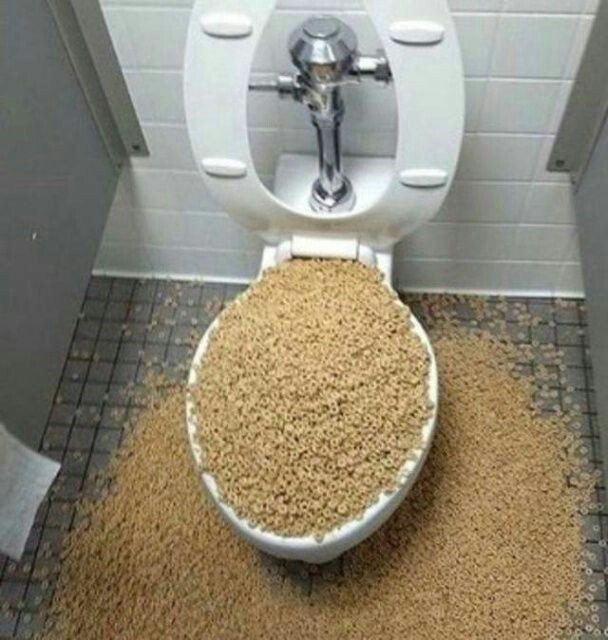This article down the page relating to What Can Happen If You Flush Food Down the Toilet? is amazingly engaging. Read it for your own benefit and decide what you think about it.

Introduction
Many individuals are typically confronted with the predicament of what to do with food waste, especially when it pertains to leftovers or scraps. One common concern that develops is whether it's okay to purge food down the bathroom. In this short article, we'll look into the reasons individuals might take into consideration flushing food, the repercussions of doing so, and alternative techniques for correct disposal.
Reasons people might take into consideration purging food
Absence of recognition
Some people might not know the potential harm triggered by purging food down the commode. They might mistakenly think that it's a harmless practice.
Benefit
Purging food down the bathroom might appear like a fast and simple option to taking care of unwanted scraps, specifically when there's no nearby trash bin offered.
Laziness
In some cases, individuals may merely select to flush food out of large laziness, without taking into consideration the effects of their actions.
Repercussions of flushing food down the commode
Environmental effect
Food waste that winds up in rivers can contribute to contamination and damage aquatic ecosystems. Furthermore, the water utilized to purge food can strain water resources.
Plumbing issues
Flushing food can lead to blocked pipes and drains, creating pricey pipes repair services and aggravations.
Sorts of food that need to not be flushed
Coarse foods
Foods with fibrous textures such as celery or corn husks can obtain tangled in pipes and trigger obstructions.
Starchy foods
Starchy foods like pasta and rice can absorb water and swell, bring about clogs in pipelines.
Oils and fats
Greasy foods like bacon or cooking oils need to never be flushed down the commode as they can strengthen and trigger clogs.
Proper disposal methods for food waste
Making use of a garbage disposal
For homes outfitted with garbage disposals, food scraps can be ground up and flushed through the plumbing system. However, not all foods are suitable for disposal in this way.
Recycling
Specific food packaging materials can be recycled, decreasing waste and reducing ecological effect.
Composting
Composting is an eco-friendly means to throw away food waste. Organic materials can be composted and used to improve soil for gardening.
The relevance of appropriate waste administration
Reducing ecological injury
Appropriate waste management methods, such as composting and recycling, help minimize air pollution and protect natural deposits for future generations.
Protecting pipes systems
By staying clear of the practice of flushing food down the toilet, home owners can stop pricey pipes fixings and maintain the stability of their plumbing systems.
Conclusion
In conclusion, while it may be appealing to purge food down the commode for comfort, it is essential to understand the possible effects of this action. By adopting appropriate waste monitoring methods and disposing of food waste properly, individuals can contribute to much healthier pipes systems and a cleaner atmosphere for all.
FLUSH FOOD DOWN THE TOILET?
FLUSHING FOOD CAN CAUSE BLOCKED DRAINS IN YOUR HOME
All of the plumbing fixtures in your home are connected to the same sewer pipe outside of your home. This outdoor sewer pipe is responsible for transporting all the wastewater from your home to the Council sewer mains. Even small pieces of food that go down the kitchen sink can cause problems for your sewer. It should therefore be obvious that flushing larger bits of food, such as meat, risks a clog in either the toilet itself or the sewer pipes. Flushing greasy food is even more problematic because oil coagulates when it cools, coating the interior lining of your pipes.
THE TOILET IS NOT A BIN
Food isn’t the only thing that people shouldn’t be flushing down the toilet. People use the toilet to dispose of all kinds of things such as tampons, makeup wipes, dental floss, kitty litter and even underwear. Water goes to great lengths to educate residents about the high costs and stress placed on wastewater treatment systems simply from people flushing the wrong stuff down the toilet. It costs taxpayers millions of dollars each year, and homeowners thousands in blocked drain repairs.
FLUSHING FOOD IS A WASTE OF WATER
Flushing food is a waste of our most precious resource - water. In June this year Level 1 water restrictions were introduced to protect water supply from drought conditions. Much of New South Wales continues to be affected by prolonged drought with recent figures revealing up to 97 per cent of the state remains in drought. Depending on whether you have a single or dual flush toilet, every single flush uses between five and 11 litres of water. In the current climate this is a huge amount of water to be wasting on flushing food that should be placed in the bin (or better yet, the compost).
https://www.jabplumbingsolutions.com.au/blog/can-you-flush-food-down-the-toilet

Do you enjoy reading about Think Twice Before Flushing Food Down Your Toilet? Try leaving a review down the page. We'd be happy to find out your thoughts about this blog entry. We are looking forward that you visit us again before long. Sharing is nice. Helping people is fun. Many thanks for going through it.
Schedule A Free Estimate
Comments on “Can One to Dispose of Food Down the Toilet?”